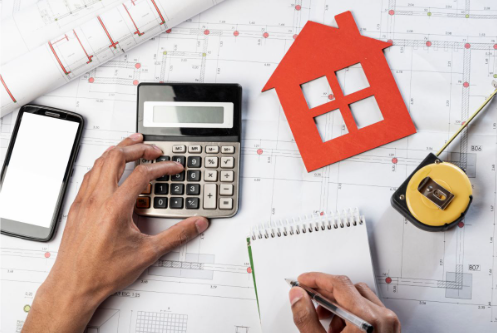Thinking about adding more space to your home? Maybe you need an extra room for guests, a home office, or more extra rooms. House additions and remodeling can be exciting, but they can also feel Overpowering, especially when it comes to managing costs. That’s why having a clear plan is essential.
Budgeting is crucial in any home project. It helps you set limits and keeps you Stable,making sure you don’t overspend expenses while still achieving your dream space. In this article, we’ll discuss practical tips on how to plan a home additions contractor and do it without Busting your budget. Let’s begin!
Set Your Aims
Identify Needs vs. Wants
The first step is to understand what you truly need compared to what would just be nice to have. For instance, if you want to add a bedroom, think about this: Do you really need a bathroom attached to it, or is it okay to share a bathroom with others? By knowing the difference between what is essential and what is extra, you can decide what is most important for your project.Consider Future Needs
Also, think about how your needs may change over time. Are you planning to expand your family? Will your kids be moving back home after college? These questions can help you make choices that will serve you well in the long run. Planning for the future can save you from having to make more changes later.
Create a practical Budget
Research Costs
“Budgeting is the first step to financial peace.”
Next, it’s time to set a budget. Start by researching the average costs of materials and labor in your area. Websites, local suppliers, or talking to friends who have done similar projects can provide valuable insights. This research will give you a clearer picture of what to expect.
Plan for Unexpected Expenses
Always remember to set aside an expense—about 10-20% of your total budget. Unexpected costs can arise, whether it comes to hidden damage or needing extra materials. Having this safety net can ease your mind as you move forward with your plans.
Focus on Key Projects
List Projects by Importance
Once you have your goals and budget in mind, make a list of all the projects you want to tackle. Rank them based on necessity and impact. This way, you can focus on what matters most and ensure that your budget covers these priorities.
Focus on One Project at a Time
IIt’s easy to want to do everything all at once, but it’s better to work on one project at a time. This makes things easier and less stressful. When you finish one project before starting the next, you can keep track of your money better and feel proud of what you’ve accomplished.
Find Cheap Solutions
Do It Yourself
If you like to work with your hands or want to learn, try doing some tasks yourself. Simple jobs like painting, gardening, or putting in lights can save you money. Just be honest about what you can do and how much time you have.
Use Recycled Materials
Look for recycled materials. Many local stores offer unique items at lower prices. This saves you money and is good for the environment.
Choose Cheaper Options
When picking materials, look for cheap choices that still look nice. For example, laminate countertops can look like stone but cost much less. These choices help keep your project within budget.
Request Various Estimates
Research Contractors
When hiring people, don’t just take the first quote you get. Look for different contractors and ask for a budget from each. This helps you find the best price and someone you feel comfortable with.
Check Reviews
Read reviews and ask for references. Talking to past clients can show you how reliable a contractor is and how good their work is. Doing this is important to find someone who meets your needs.
Plan in Steps !
Take Small Steps
If your project is big, think about breaking it into smaller parts. This way, you can work on one section at a time, making it easier to manage costs and less stressful.
Manage Your Time
Set realistic times for each part of the project. Don’t rush. Taking your time helps you avoid mistakes and makes sure everything is done right. Plus, it makes the process more enjoyable!
Talk to Your Contractor
Be Clear
Once you have a contractor for your services, clear communication is very important. Talk about your budget openly and set clear expectations from the start. A good contractor will appreciate your honesty.
Regular Updates
Have regular check-ins to see how things are going and to discuss costs. This way, you can fix any issues before they become big problems. Good communication keeps you and your contractor in alignment.
Moving Ahead with Confidence
As you think about your home addition or home remodeling project, remember that planning can be simple. By breaking down your goals, setting a realistic budget, and finding cheap solutions, you can create a space that feels like home without spending too much money.
Take your time to focus on what matters most to you, and don’t be afraid to ask for help when you need it. This process is about making your home work for you and your family, and every little step counts. Enjoy the experience, stay flexible, and keep your vision in mind!

